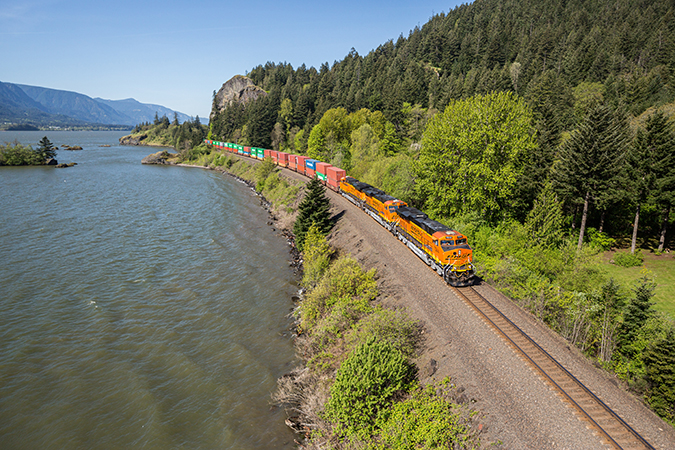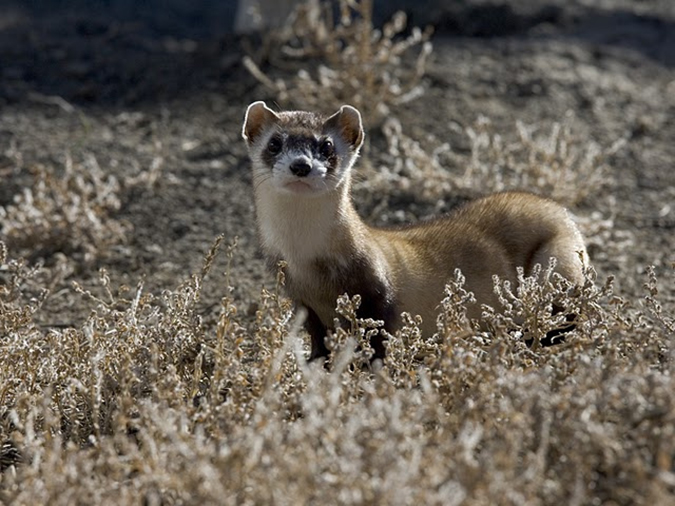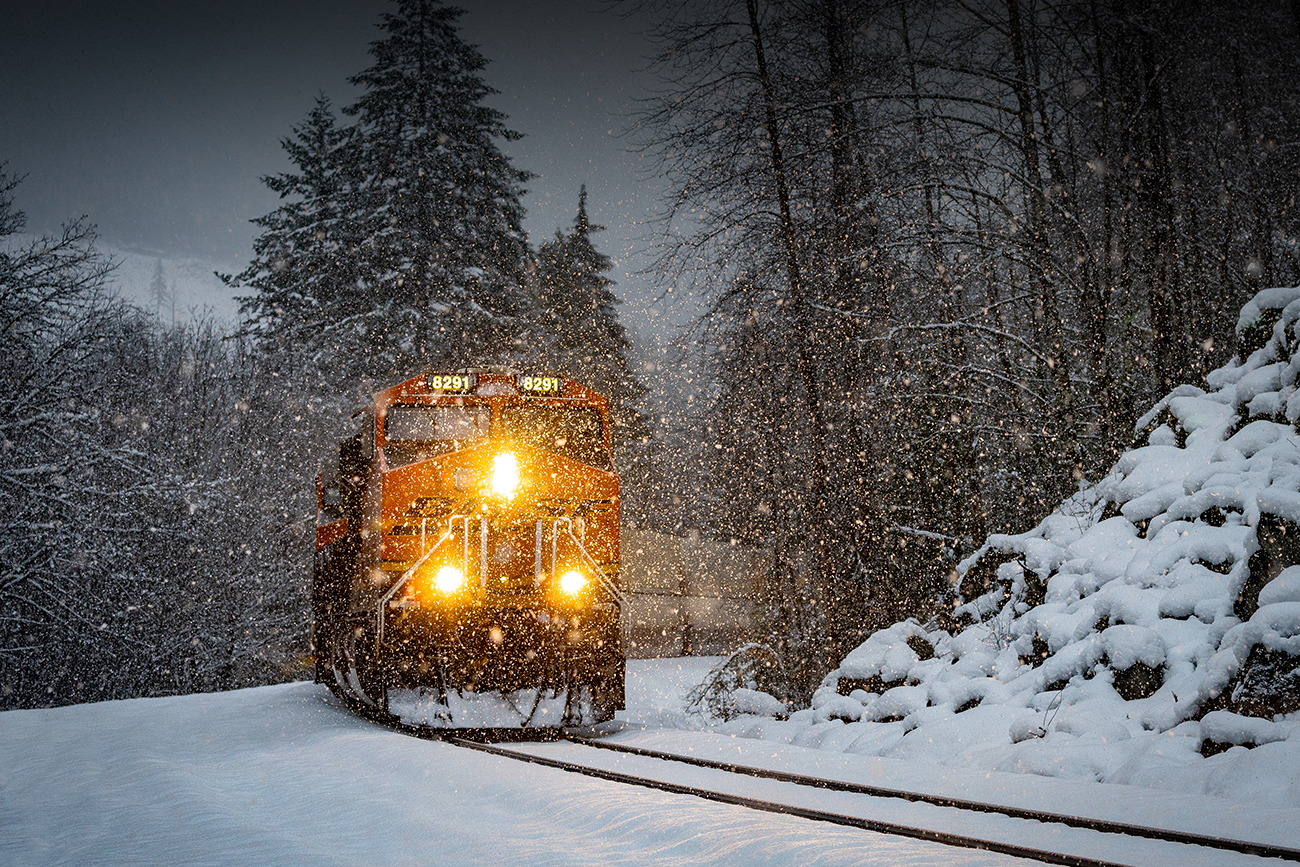Good neighbors: BNSF works to preserve wildlife habitat along our network

Rail is the most environmentally efficient mode of surface transportation. On average, BNSF trains can move one ton of freight more than 480 miles on only one gallon of diesel fuel. Our customers reduce their own total carbon emissions by shipping with BNSF instead of putting trucks on the highway.
But BNSF also leads on sustainability on many other fronts. Among them, we work to minimize our impact to wildlife and support healthy ecosystems. One way we do this is to protect habitat near our rail network, especially when we plan maintenance or construction projects. Another is to deter animals from venturing onto or near our track. Also, through the BNSF Railway Foundation, we have long supported nonprofits that promote sensitive habitat protection and wildlife stewardship.
Lightening a footprint
“Regardless of whether it’s a tiny toad, a bird or a bear, we want to be responsible stewards of nearby habitat,” said BNSF Vice President Environment & Sustainability John Lovenburg. “At the same time, our customers have need for our services and related economic projects, so we work with stakeholders to design sustainable development win-wins that enable growth and protect sensitive habitat.”

Take the example of the arroyo toad. Because of urban development, this toad was classified as an endangered species. So, when BNSF proposed to build 16 miles of a new third main line on our Southern Transcon route through Cajon Pass in California, we worked with federal and local agencies to preserve the area by contributing conservation funding to secure the highest-quality habitat for the toads.
Among the actions we took: a nightly pre-construction sweep of the habitat; installing a “drift fence” to keep toads from the work space; monitoring and relocating toads based on pre-approved specifications; and other mitigation efforts, like avoiding working in streams and using directional lighting aimed away from the habitat.
And when on that same important Los Angeles-Chicago route we added a second track in Abo Canyon near Belen, New Mexico, a larger animal needed some protection. Because bighorn sheep had been reinstated in the canyon, BNSF crews built a wildlife fence and crossings for the sheep through bridge openings to keep them off the track.

Our feathered friends also deserve protection. During construction projects in Washington, we have found osprey nests perched atop towers or bridges. We worked with wildlife experts and agencies to put up an inviting platform for nest-building, and in one instance we even relocated the osprey nest to a platform to give the birds a safe new home.
Understanding how to keep wildlife from being drawn to our tracks has long been a goal. When grain spills from a hopper, it can attract cattle, deer, elk and grizzly bears, which are listed as threatened under the Endangered Species Act.
For more than 20 years BNSF has worked with federal, state and tribal agencies to reduce the railroad’s impact on the grizzly population in Montana. That work culminated in the publication of a Habitat Conservation Plan in 2020. That plan is currently under review by the U.S. Fish and Wildlife Service.

The plan covers more than 200 miles of our track in portions of Montana, a rail line that has been in use since 1893 and runs through grizzly bear habitat. Under the plan, BNSF identifies proactive strategies to minimize the potential for conflicts between the bears and railroad operations.
Also part of the plan, BNSF will also commit to funding more than $2 million for various grizzly conservation efforts to mitigate potential for bear mortalities arising from conflicts between the bears and humans. For example, dedicated grizzly funding will go to equipment --- education, radio collars, remote cameras and electric fencing -- and waste management resources.
Protecting those under water
We also work to protect communities under the sea and in waterways. Efforts in the Pacific Northwest are designed to accommodate fish habitat. For example, one project we’re supporting is the Little Squalicum Estuary near Bellingham Bay in Washington. It will restore nearly 5 acres of coastal habitat, including a new estuary, and remove a fish passage barrier.
Near the area, known as Little Squalicum Park, BNSF operates trains over a trestle bridge. Because the work being done is near our right-of-way, we’re coordinating with the city, neighborhoods and agencies to accommodate the project.
This is just one of many private-public projects that involve wetlands on or near our right-of-way. We value healthy streams and shorelines, for both fish and the community that wants safe access.
Another way we invest in our communities is through the BNSF Railway Foundation, which has long supported nonprofits that promote natural resource stewardship. We’ve worked with the National Fish and Wildlife Foundation (NFWF) for many years. Since 2013, we’ve contributed nearly $2.2 million to projects that protect and restore wildlife and their habitats, promote job creation, improve water quality, reduce flood risks and more.

Just one of the many projects our funding has helped support is the reintroduction of black-footed ferrets in Montana. These are an endangered species due to lack of suitable habitat, disease and a dwindling food source. The NFWF program, with BNSF’s support, helped increase the ferret population by at least 30 adults.
“We work tirelessly to develop positive relationships that strengthen the communities where we live and work, and that includes reducing our impact to those who don’t have a voice,” Lovenburg said. “On Earth Day we’re reminded that there are so many good reasons – from the furry to the feathered to the finned – to seek win-wins for a healthy environment and economy.”
